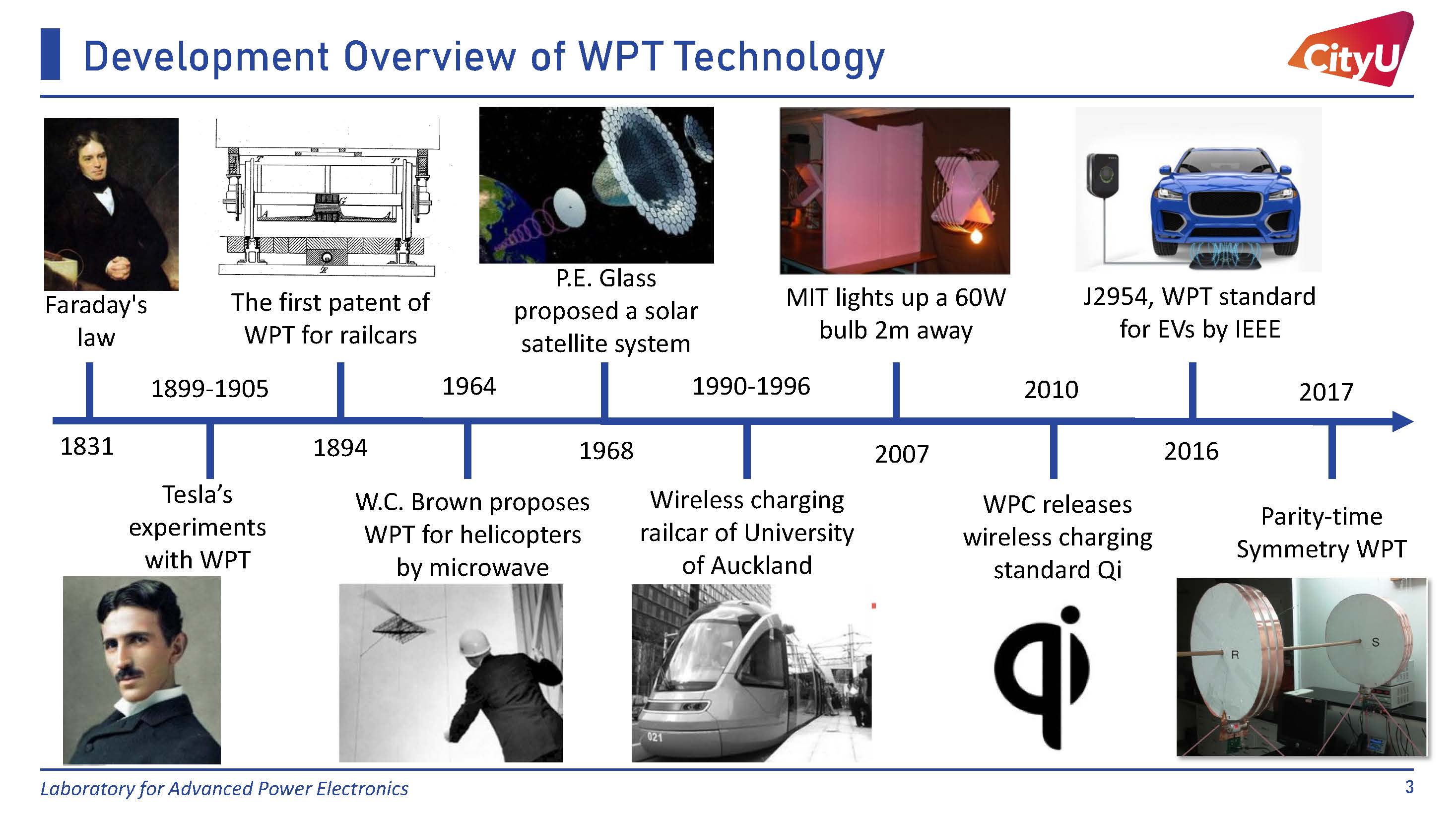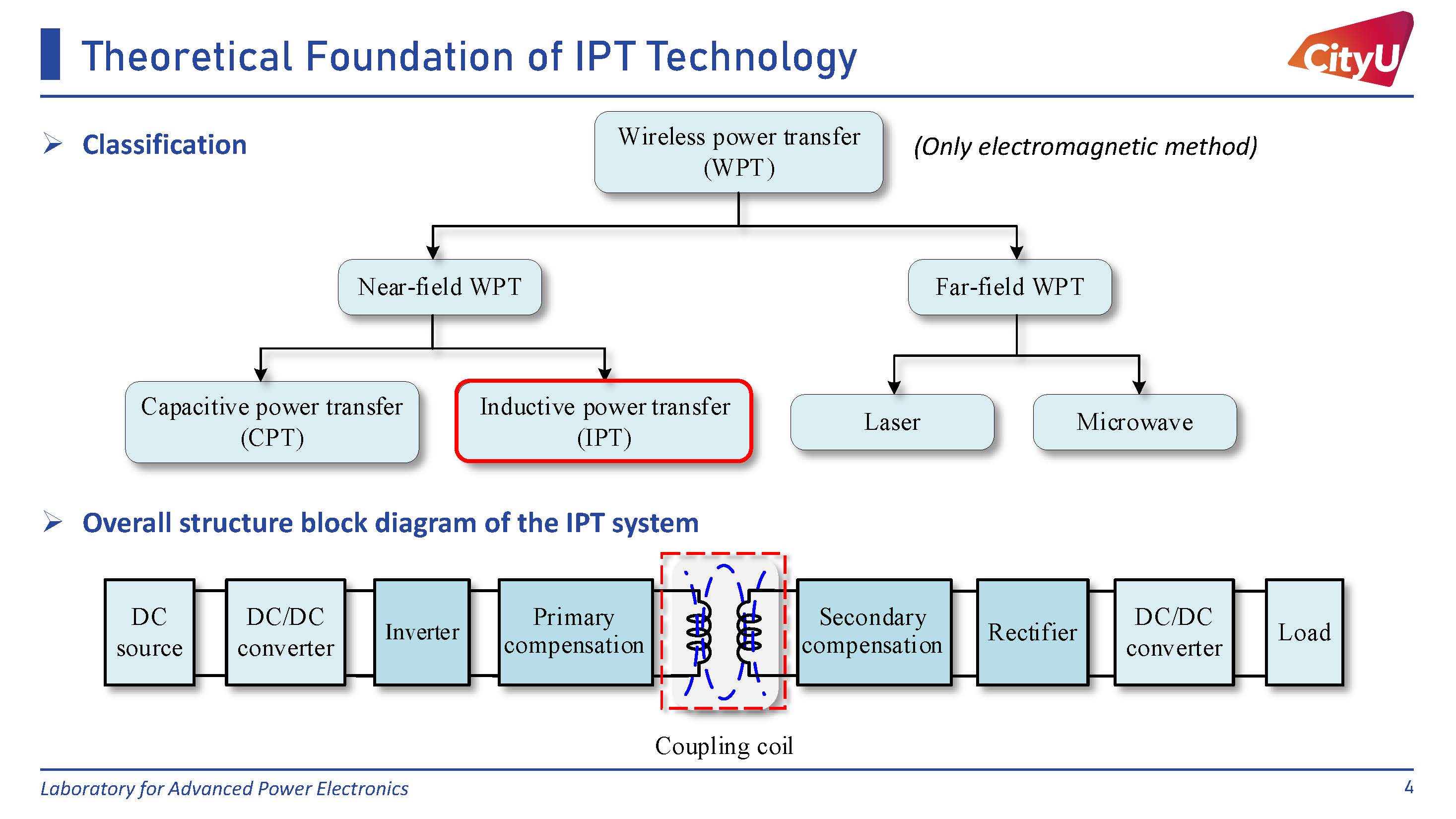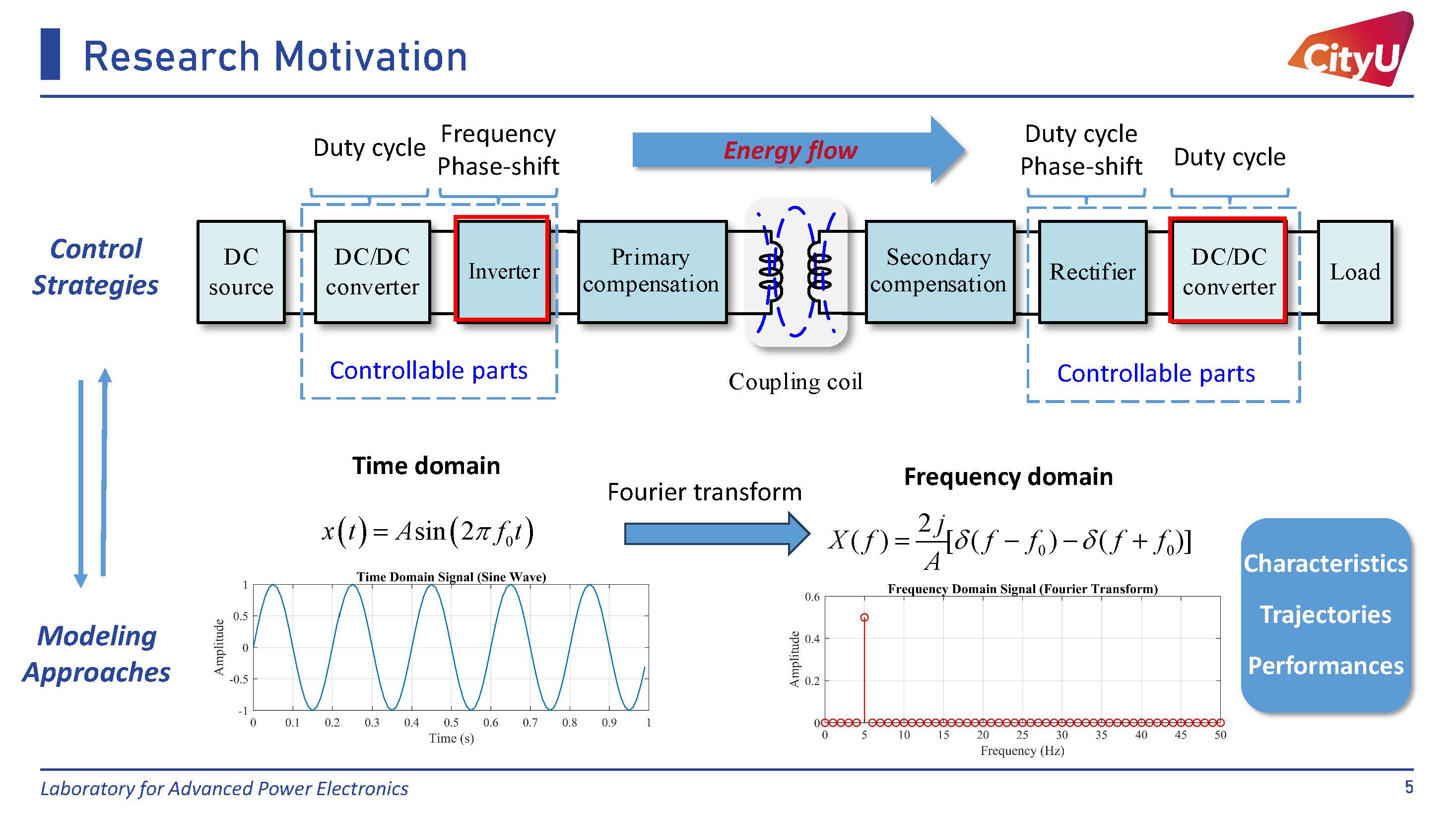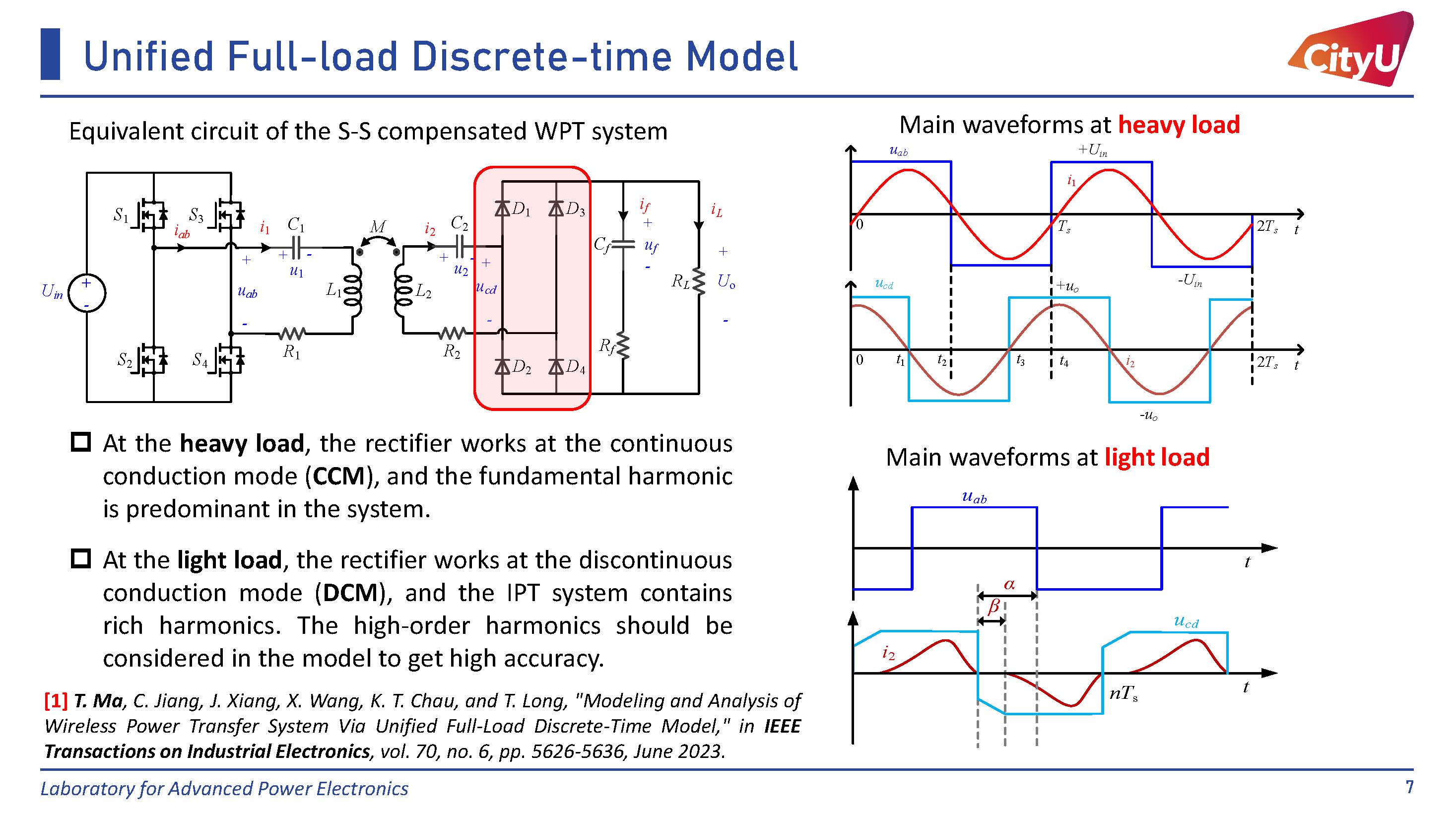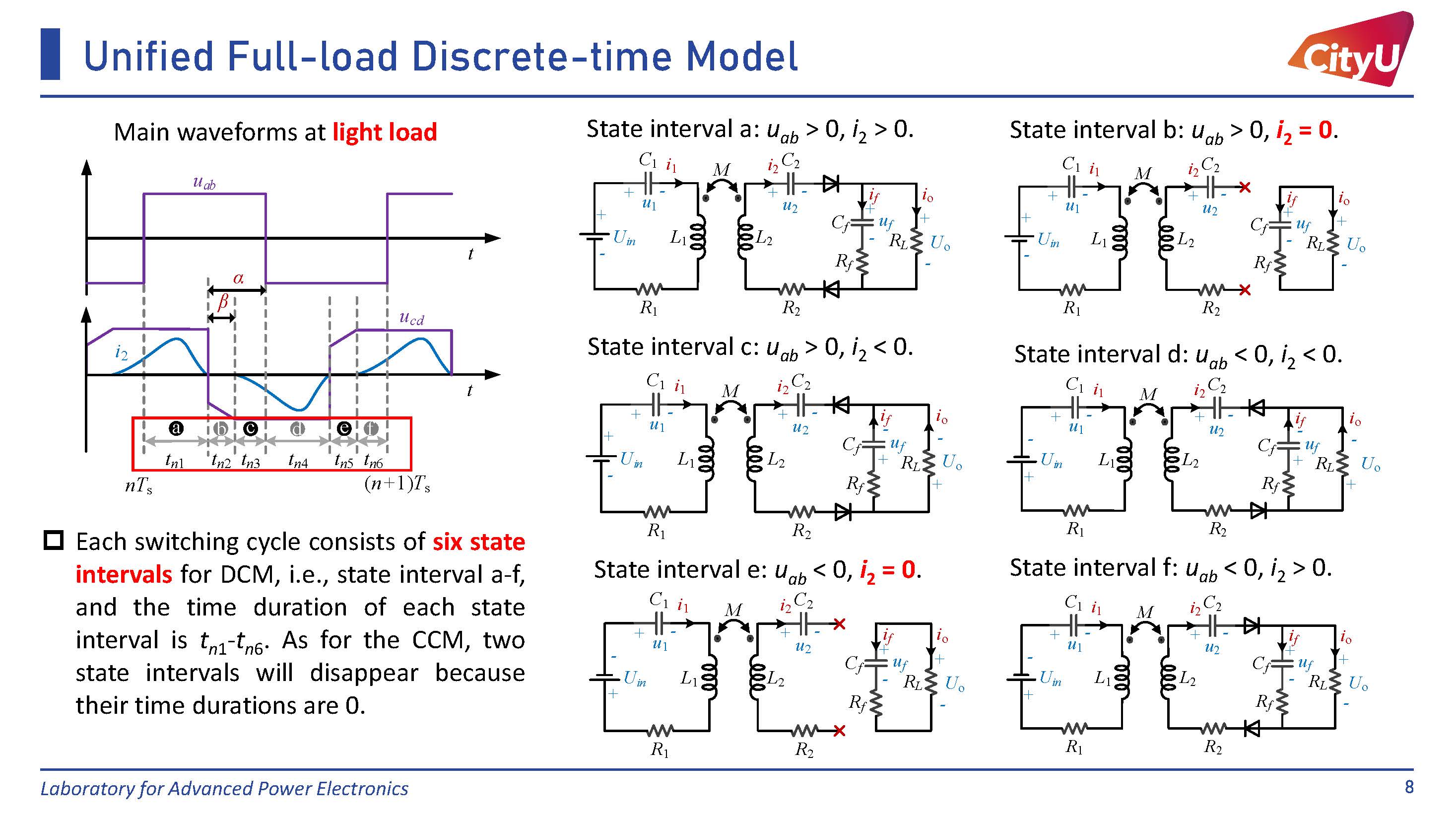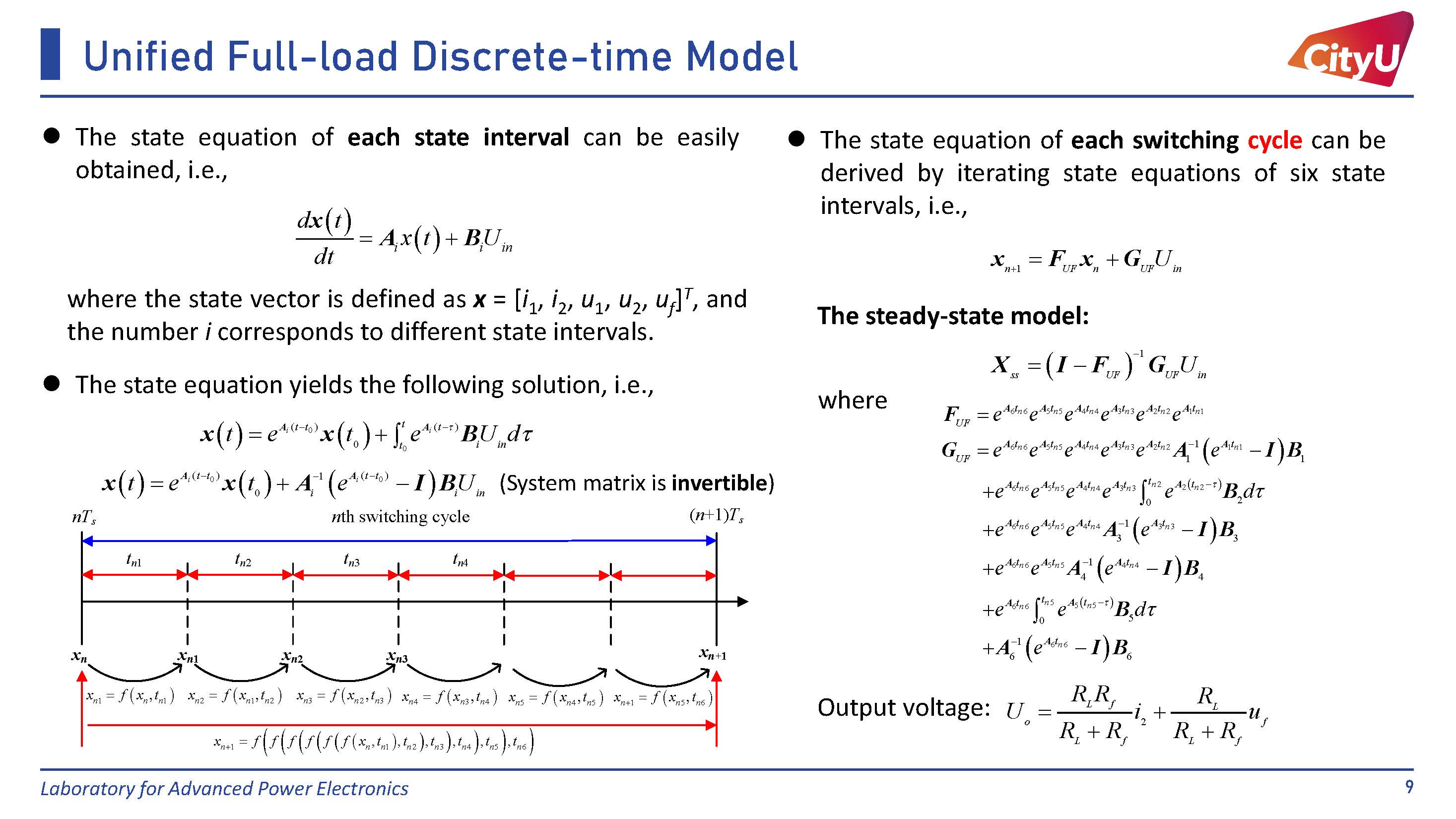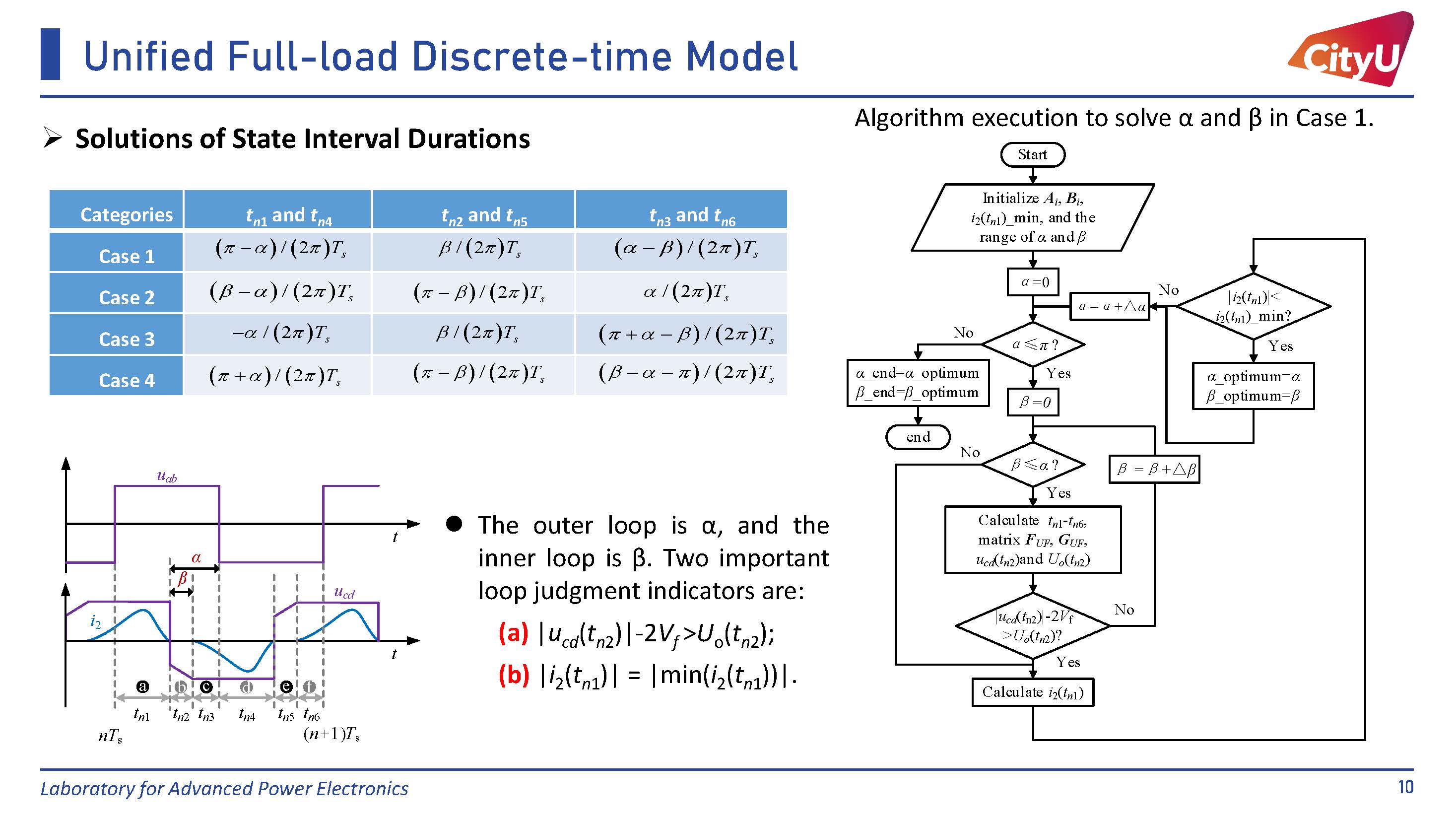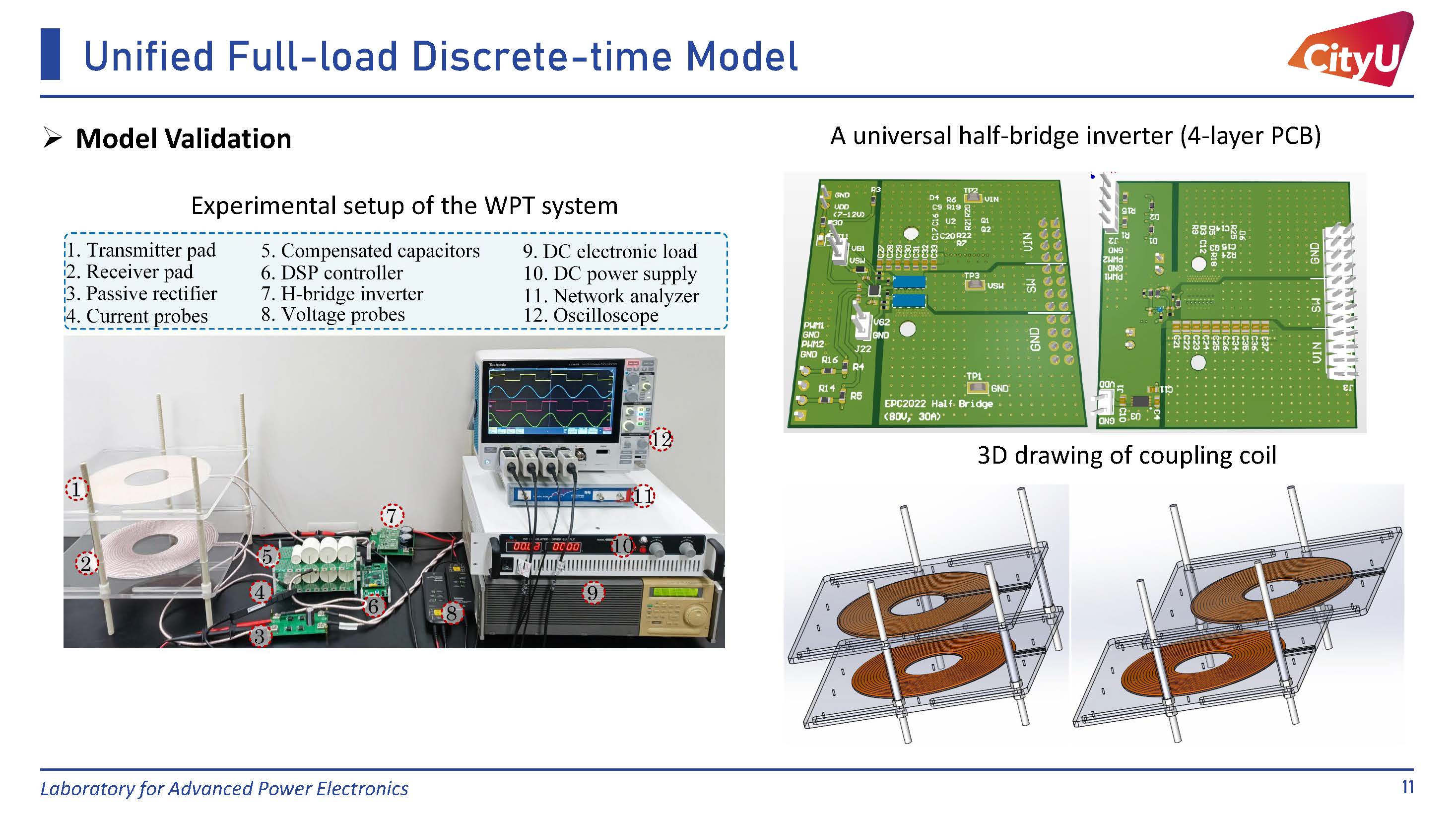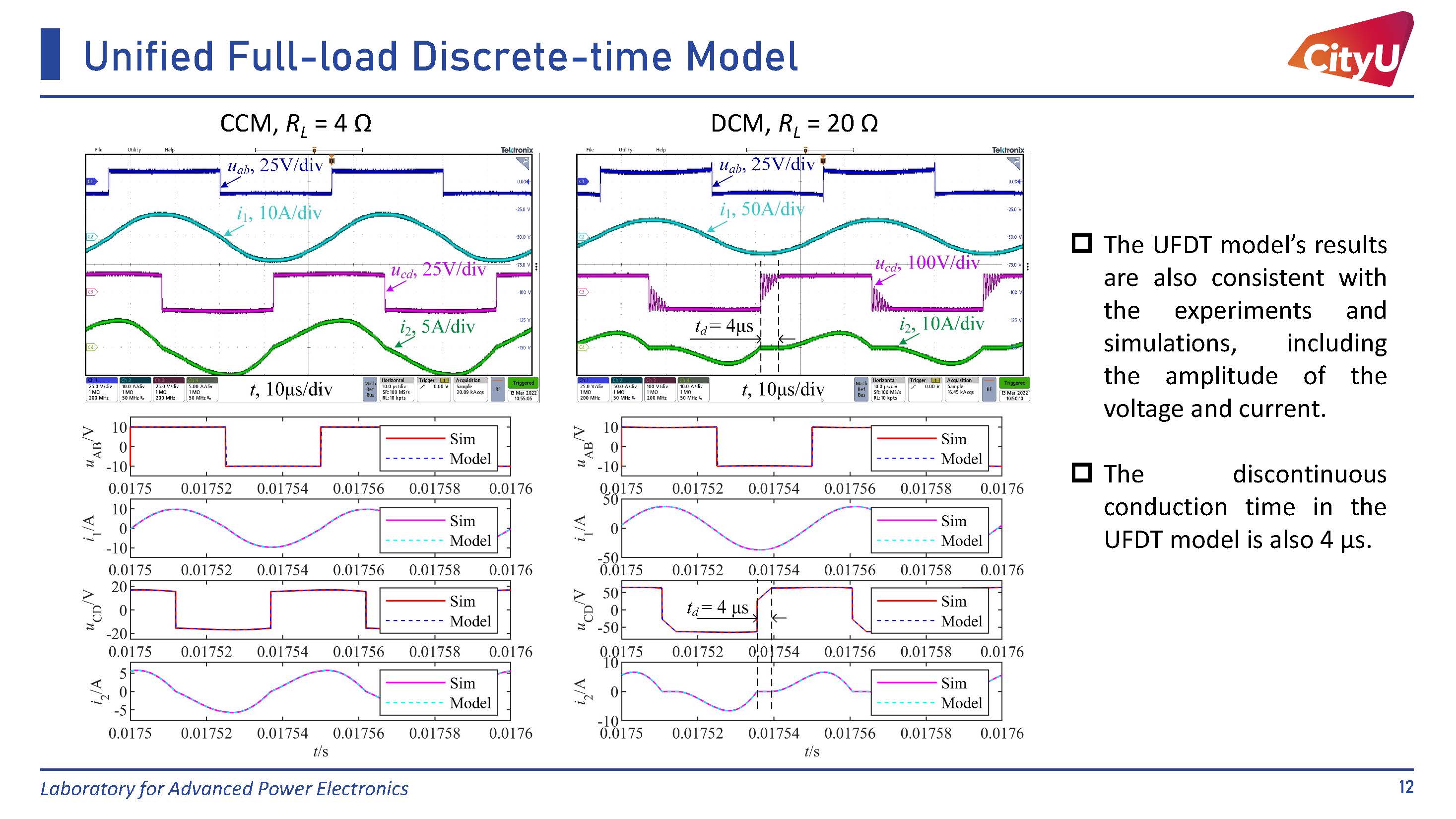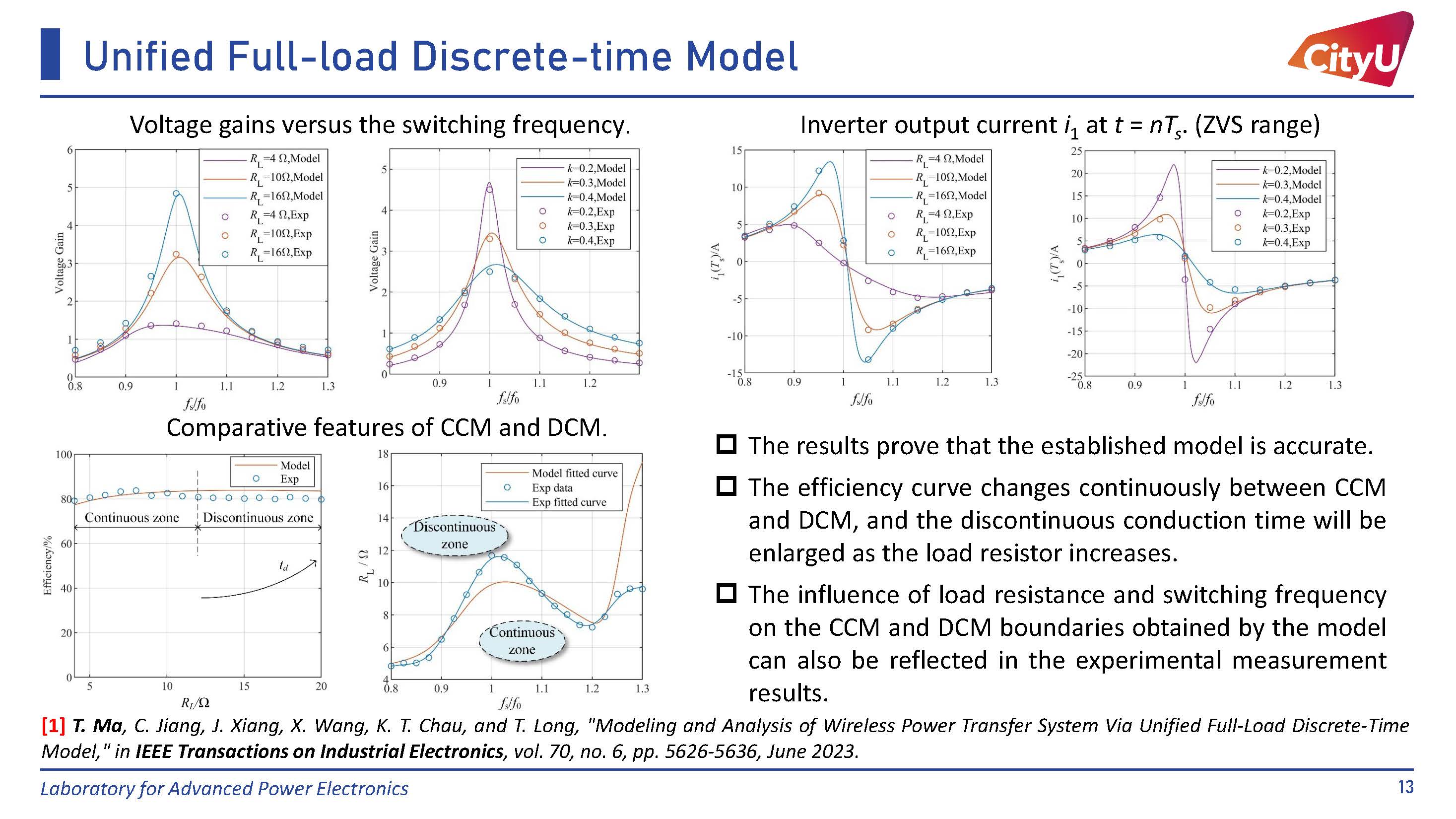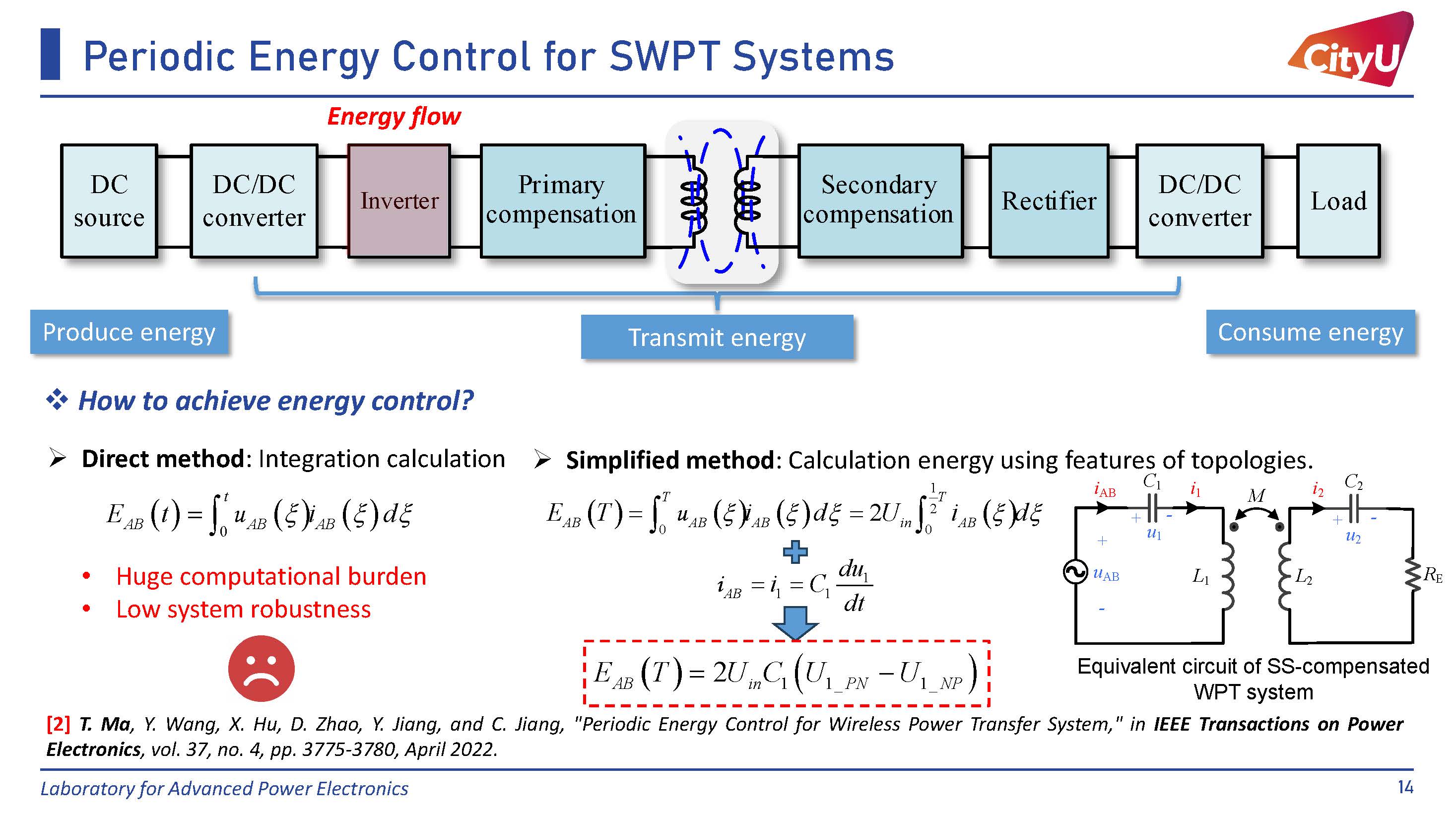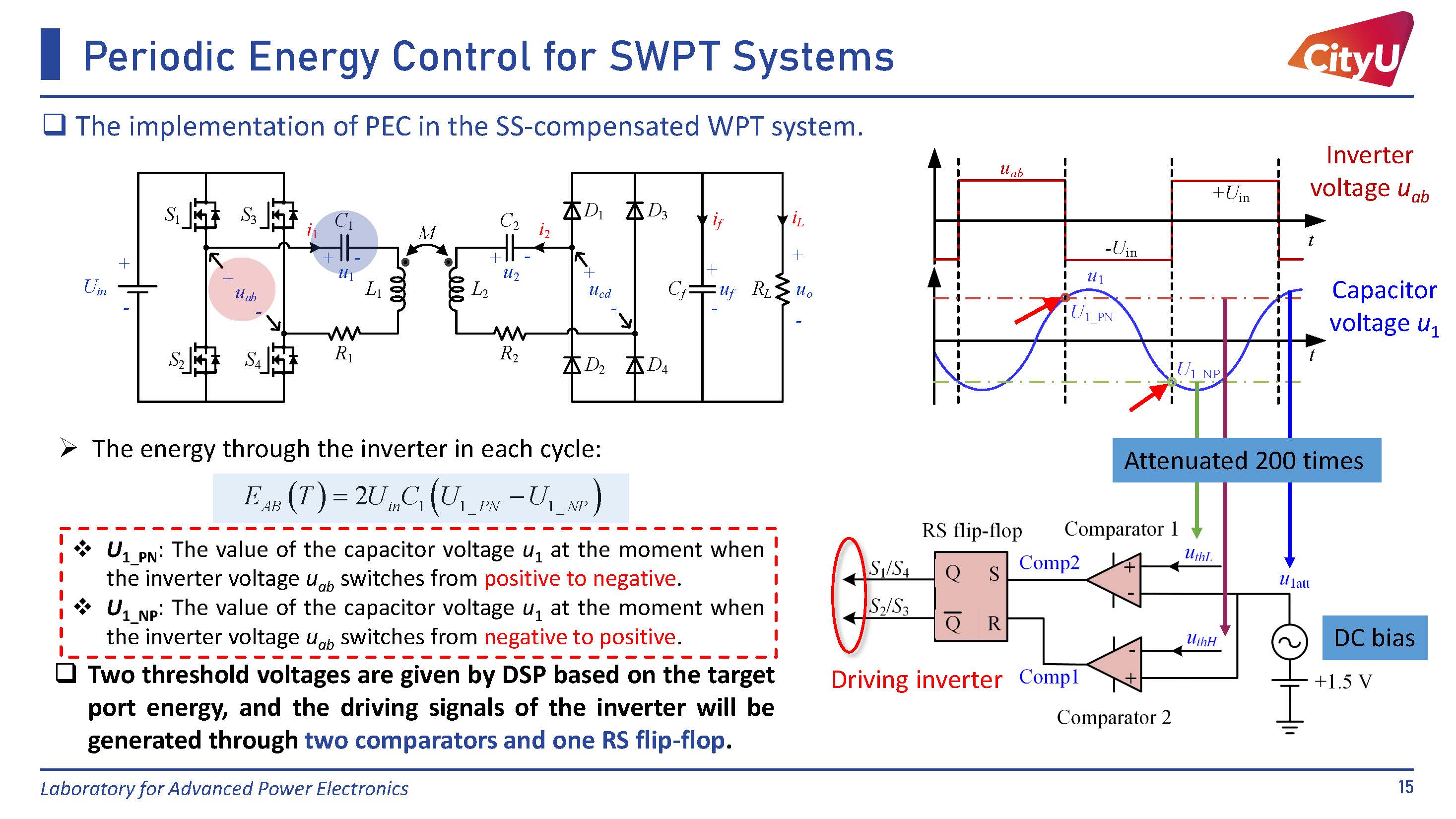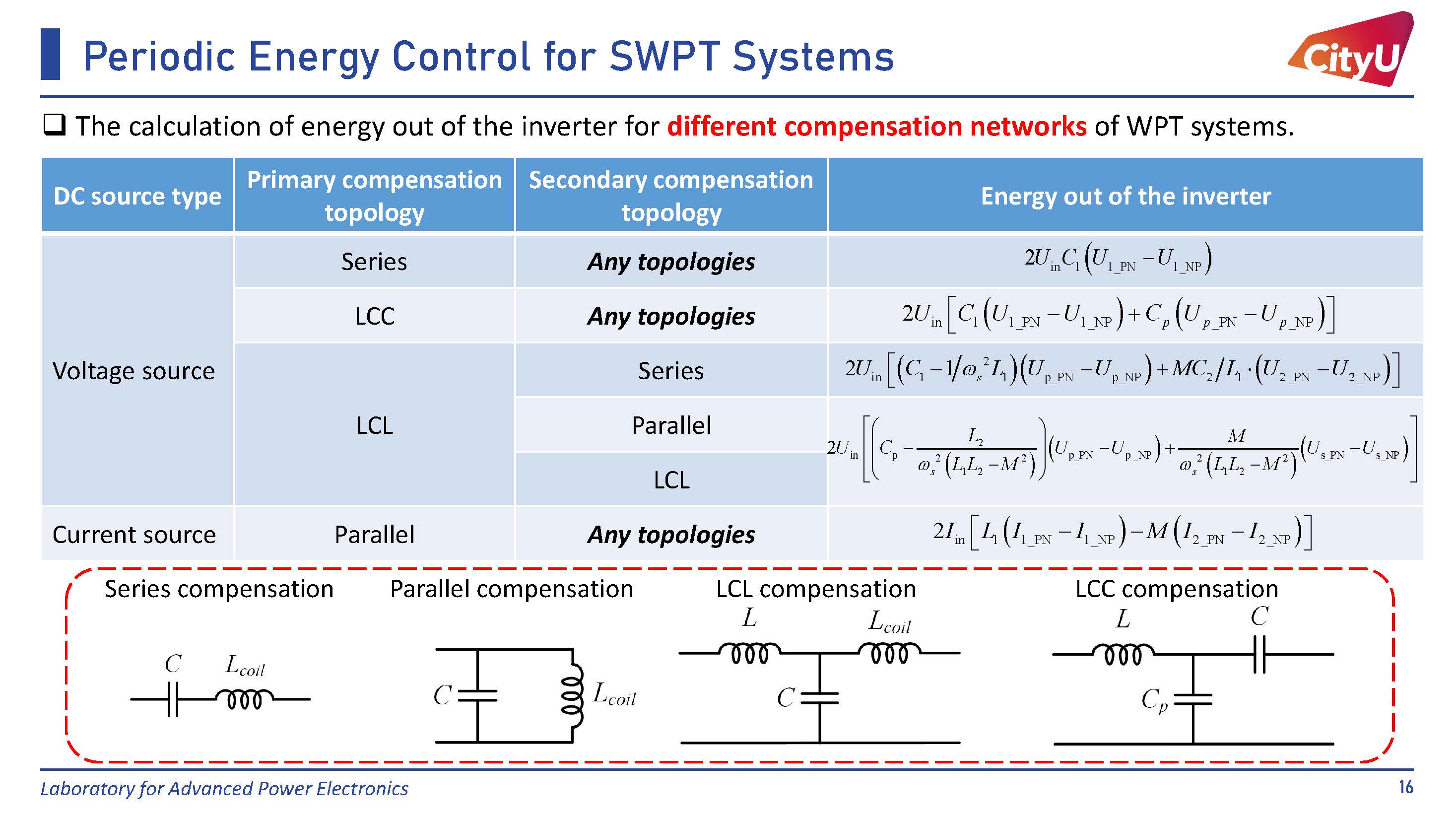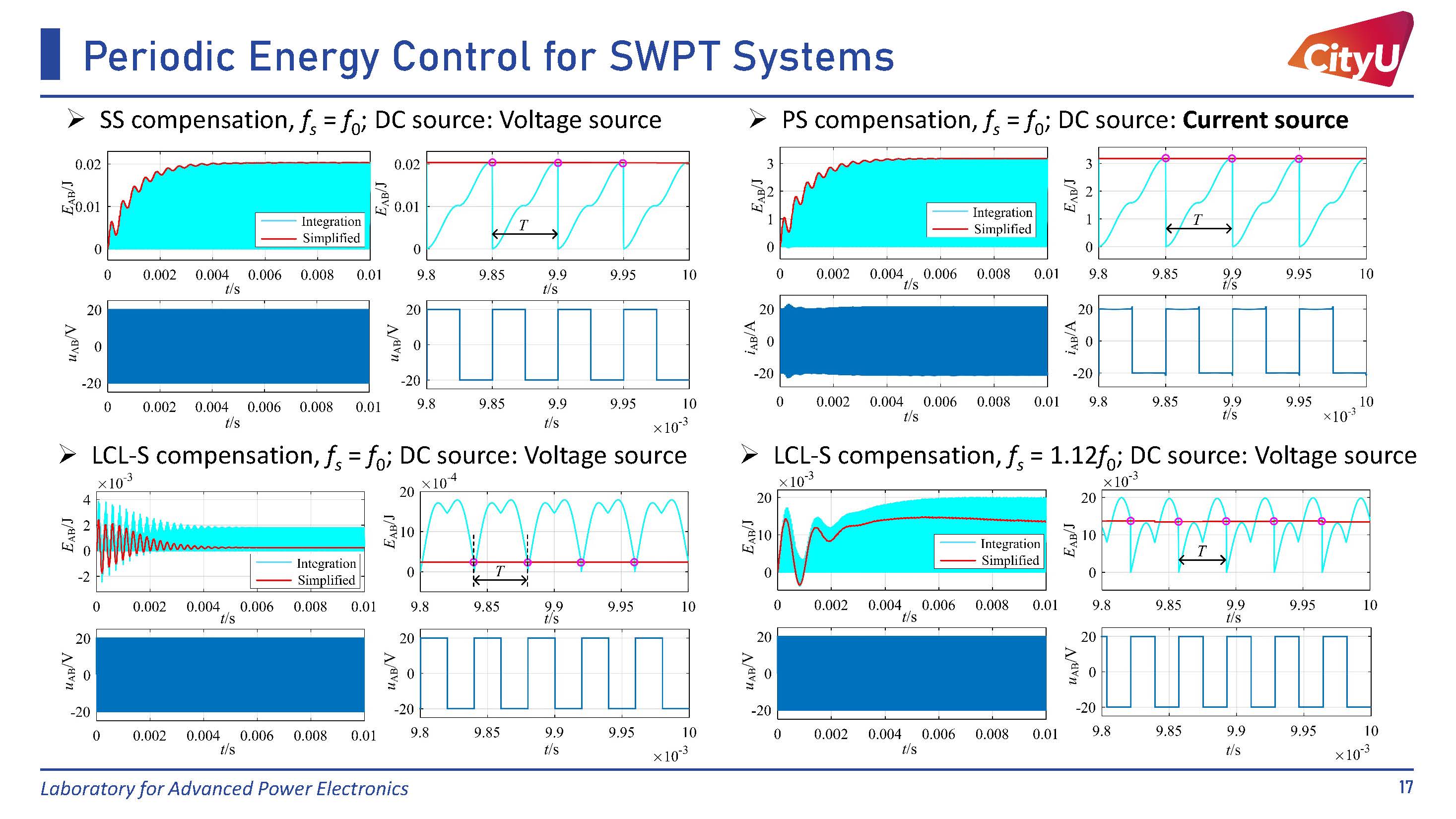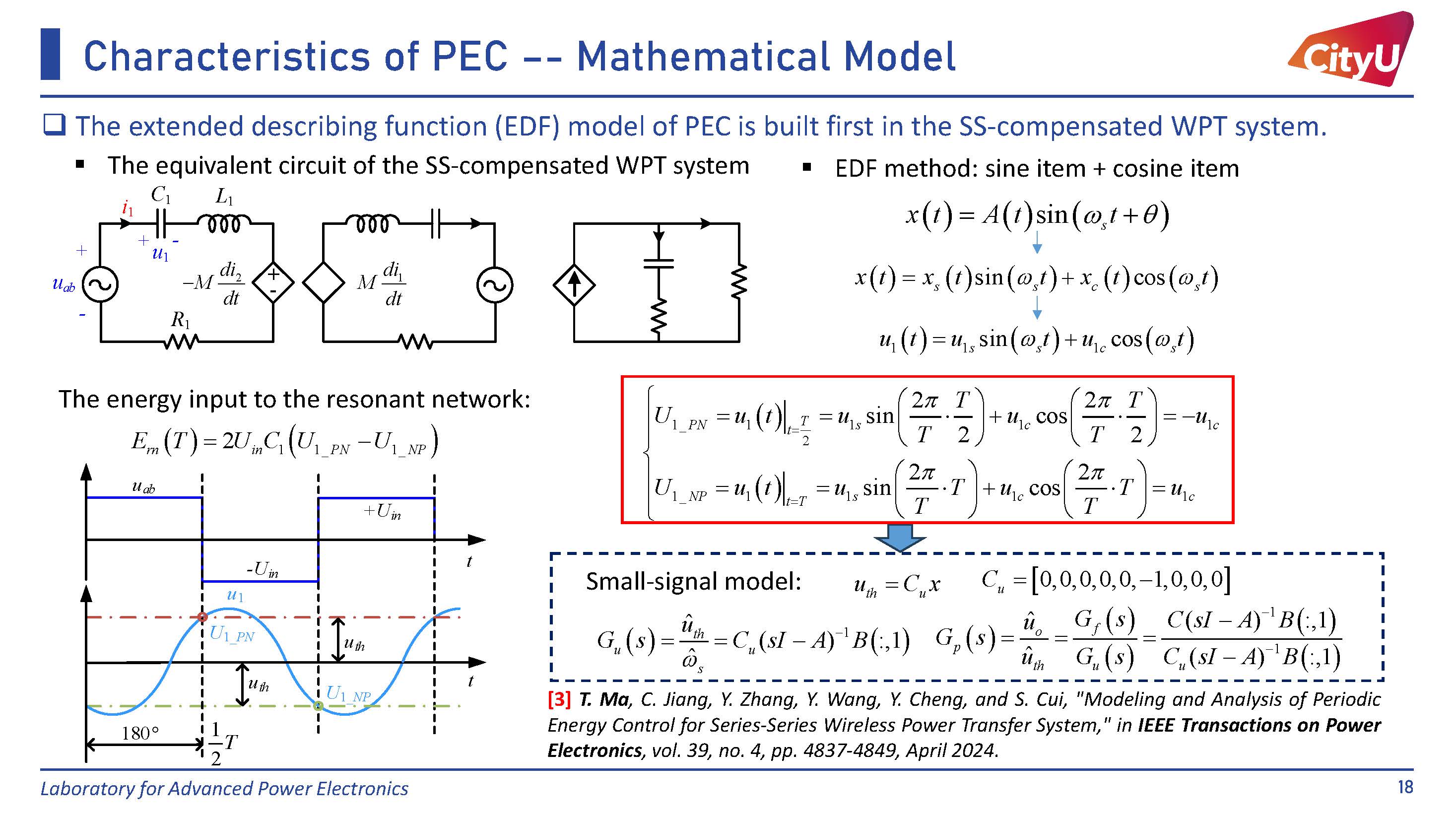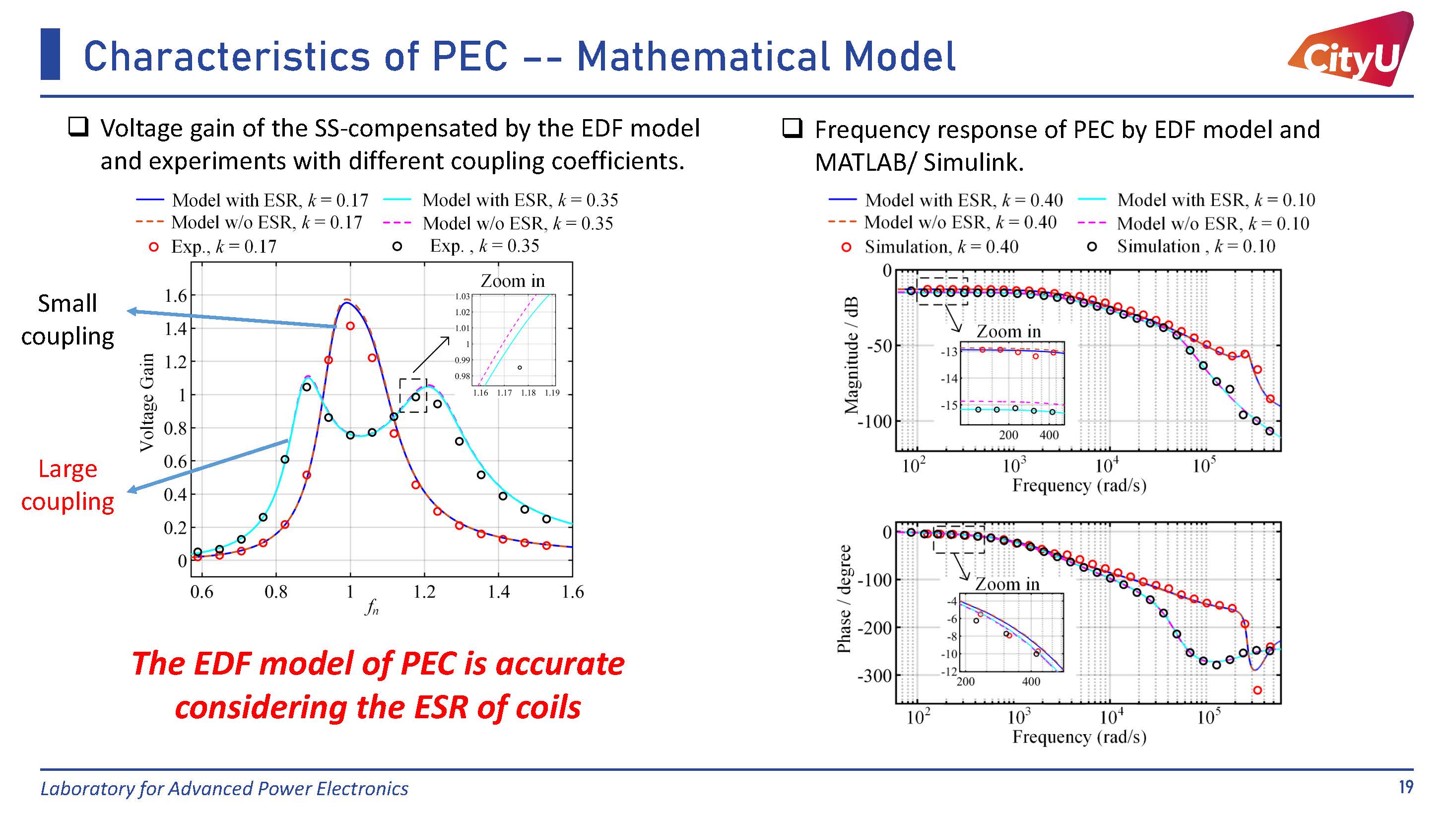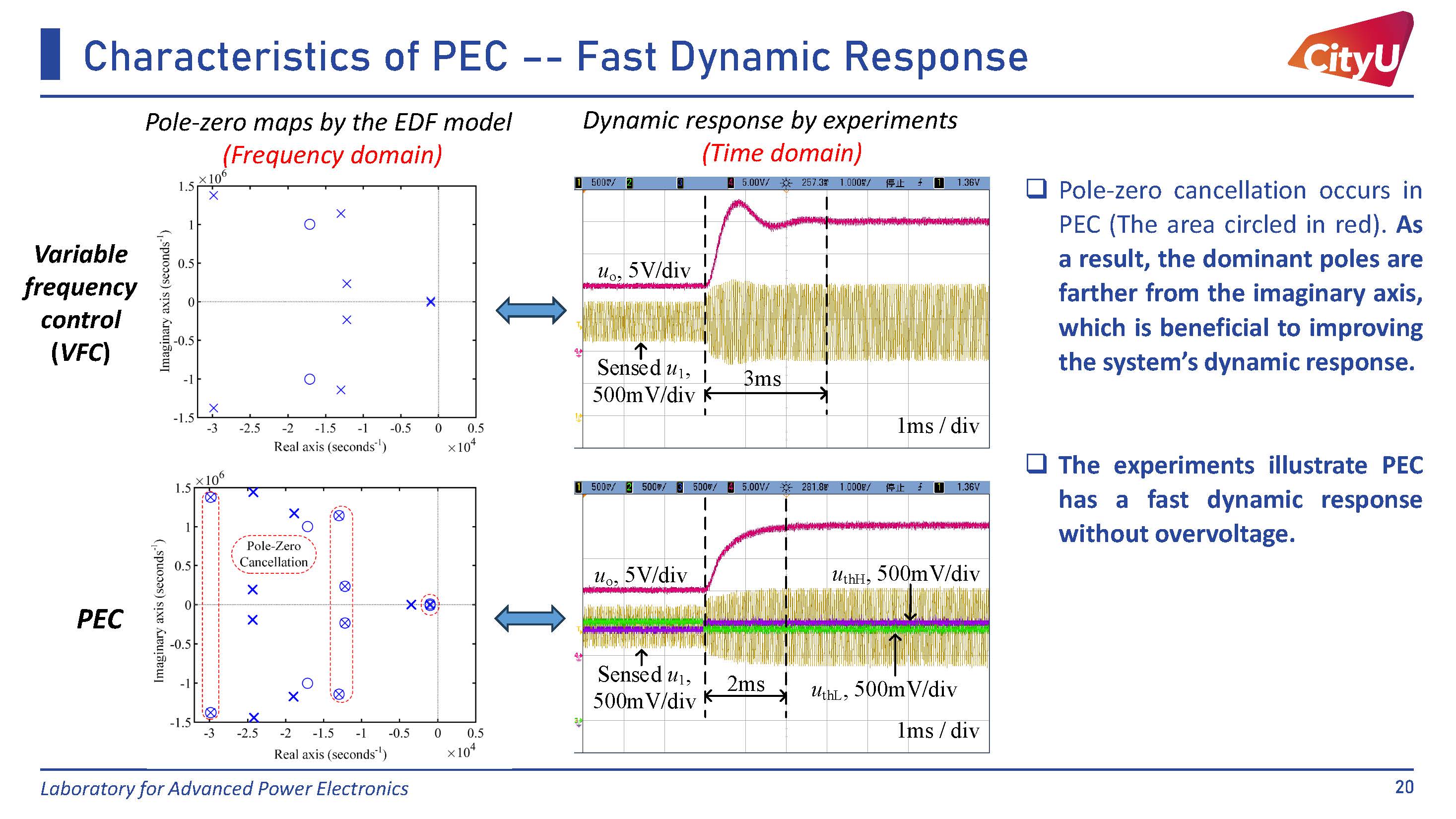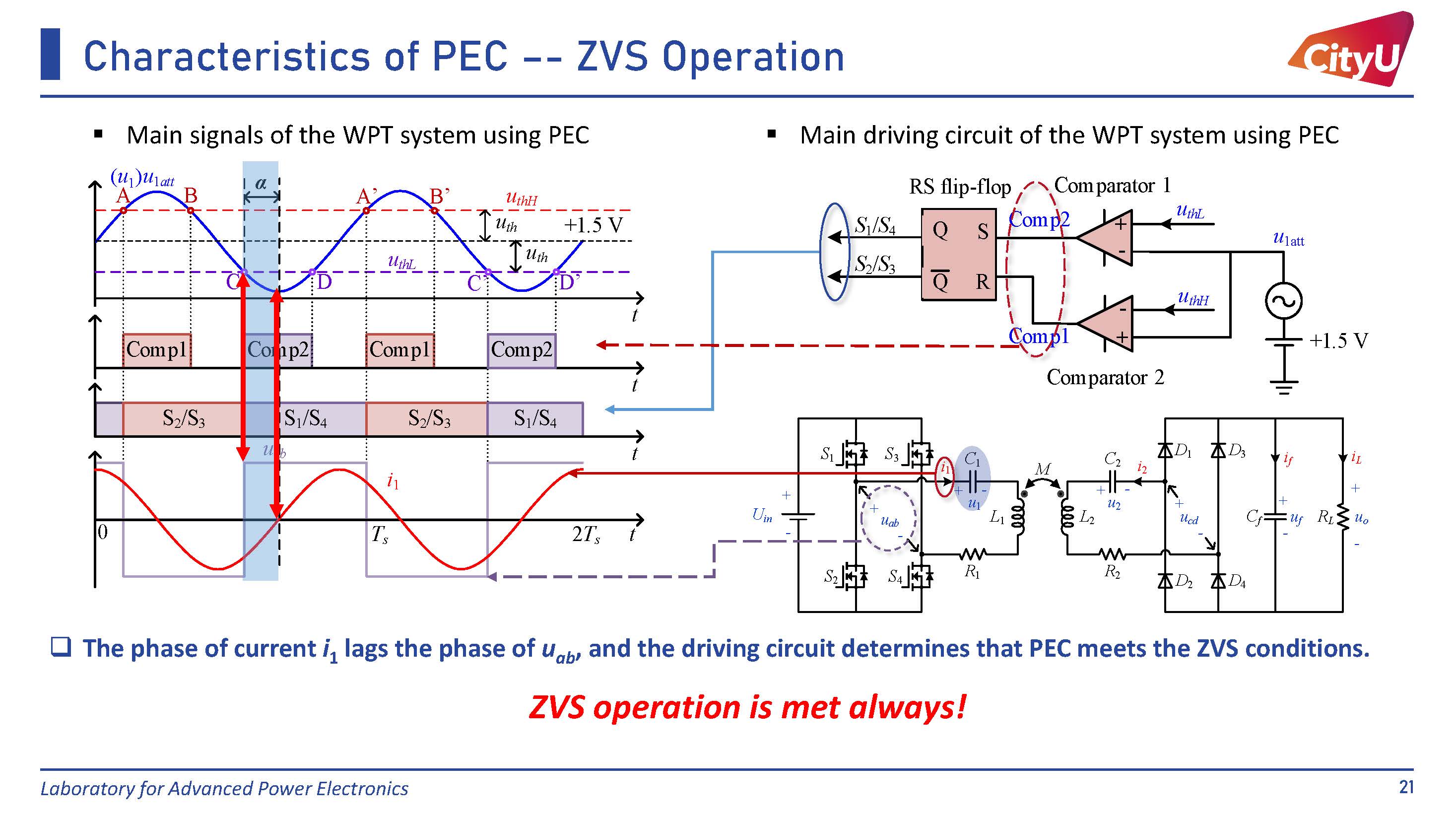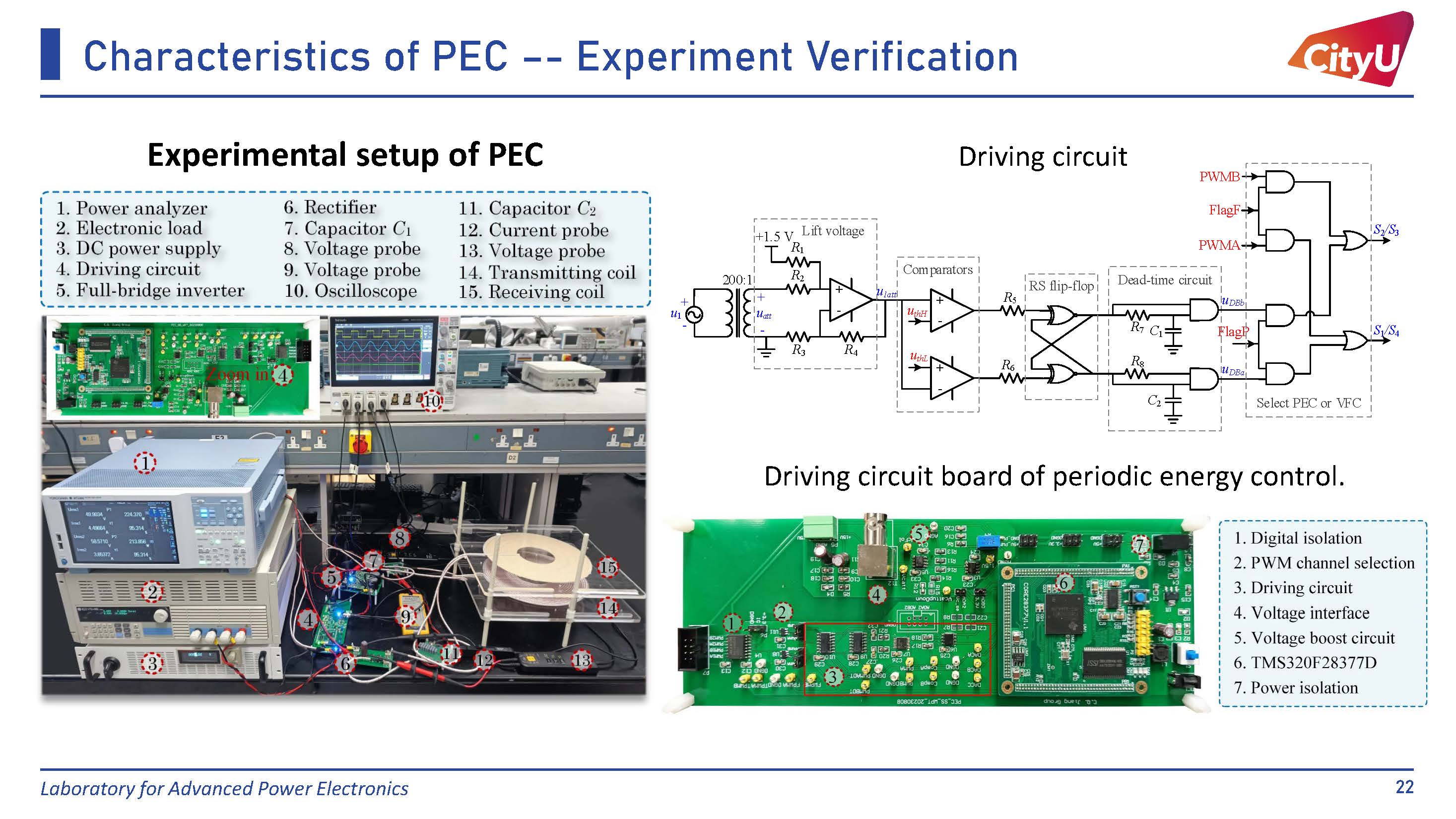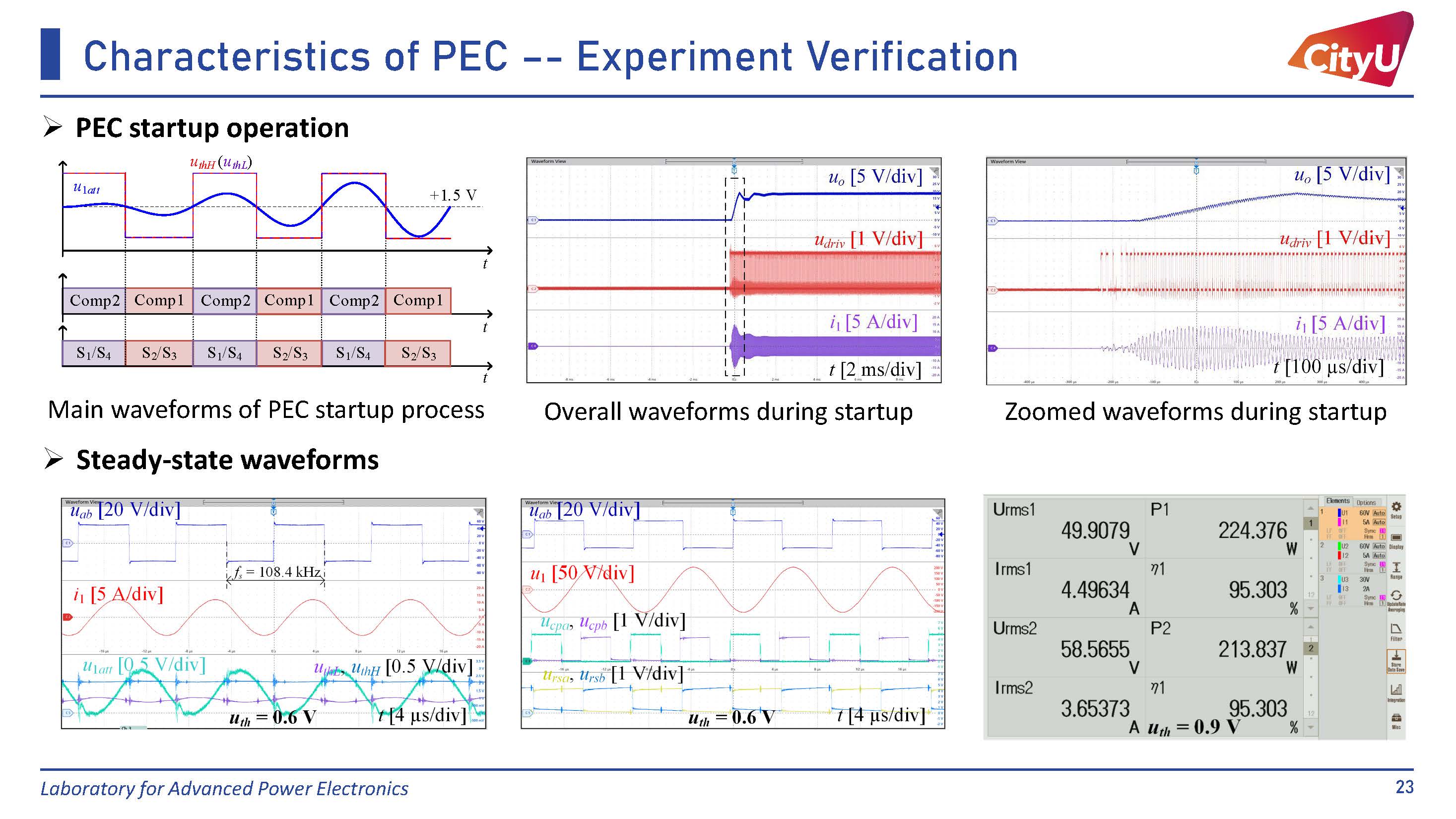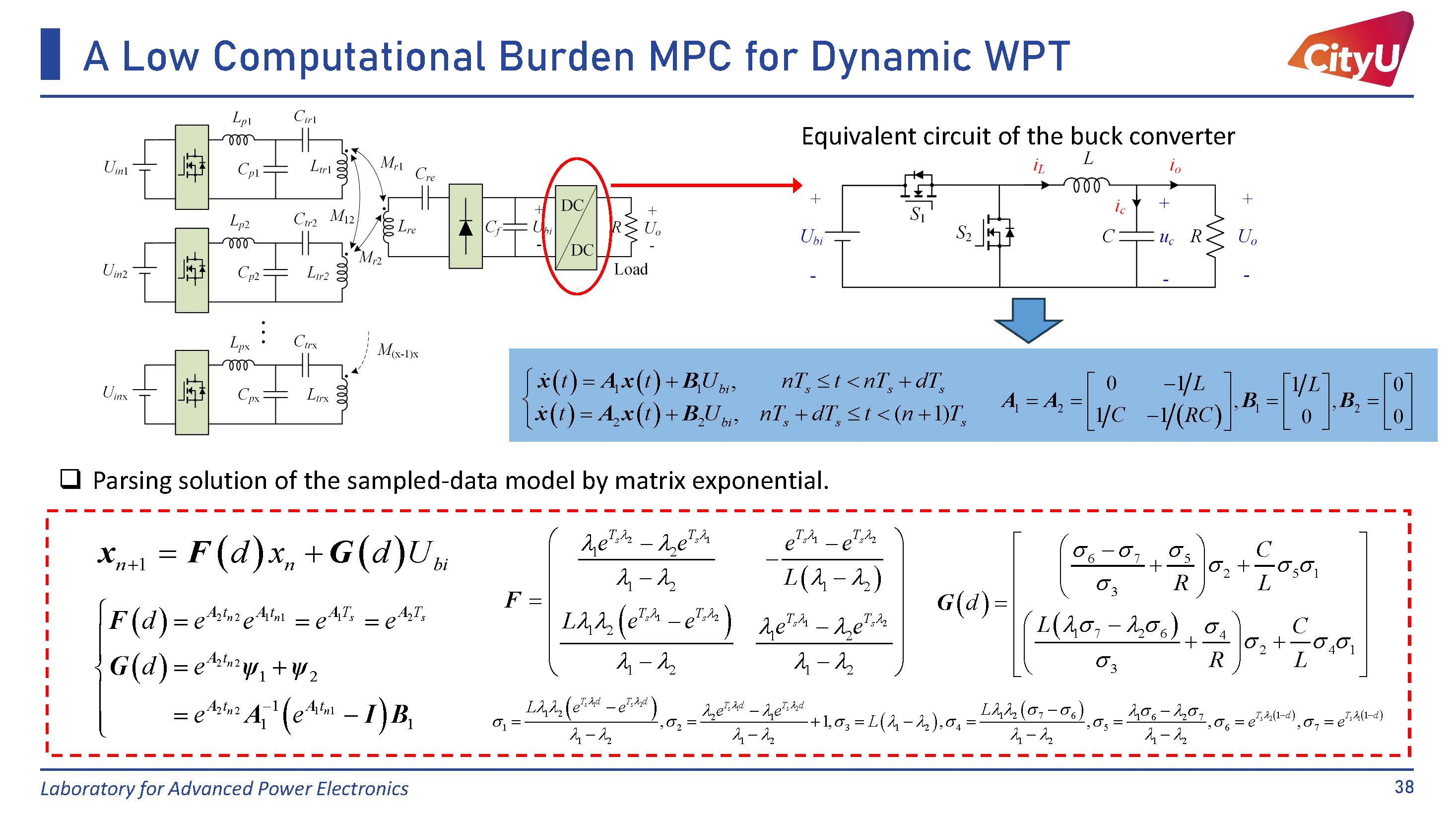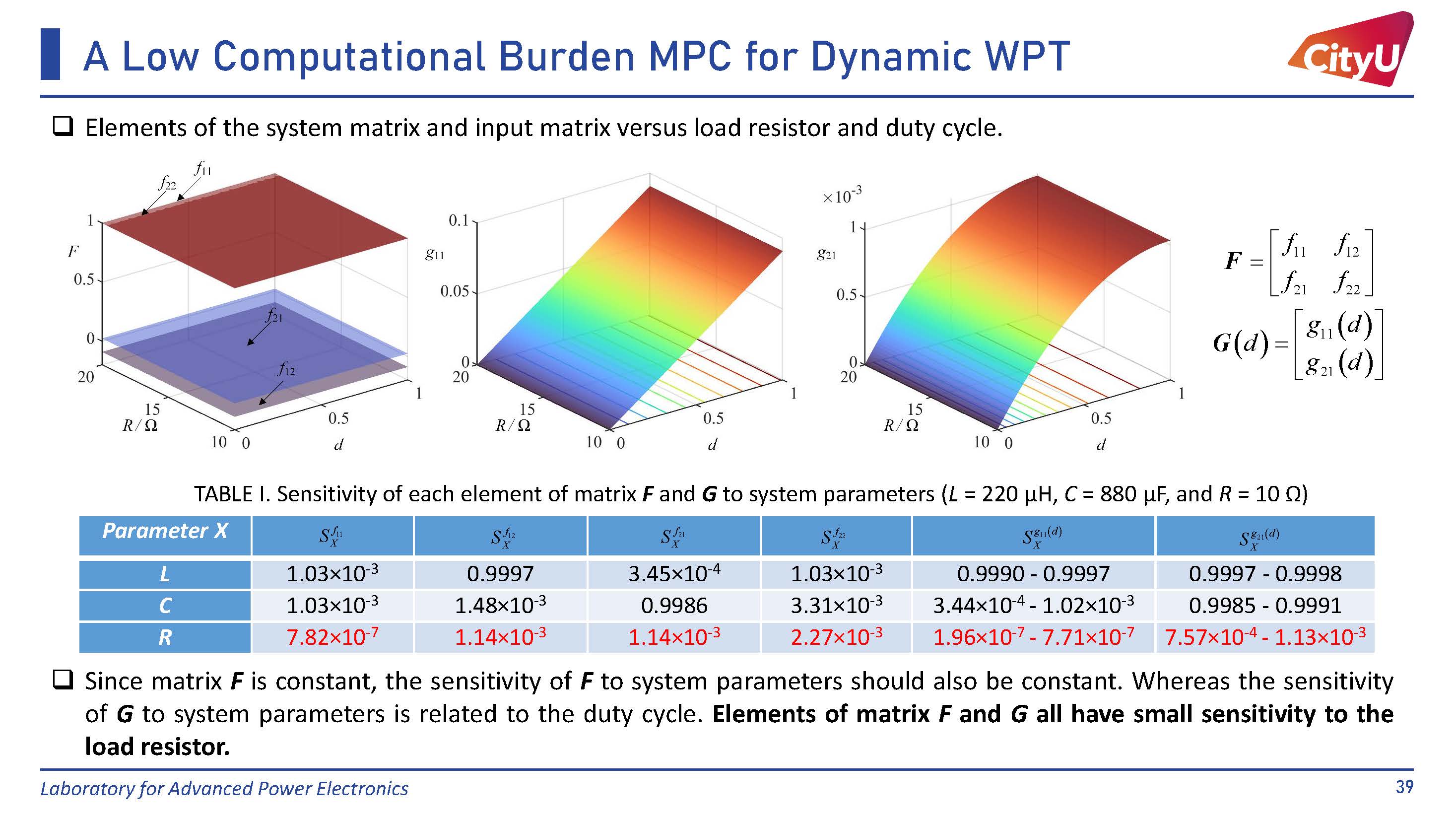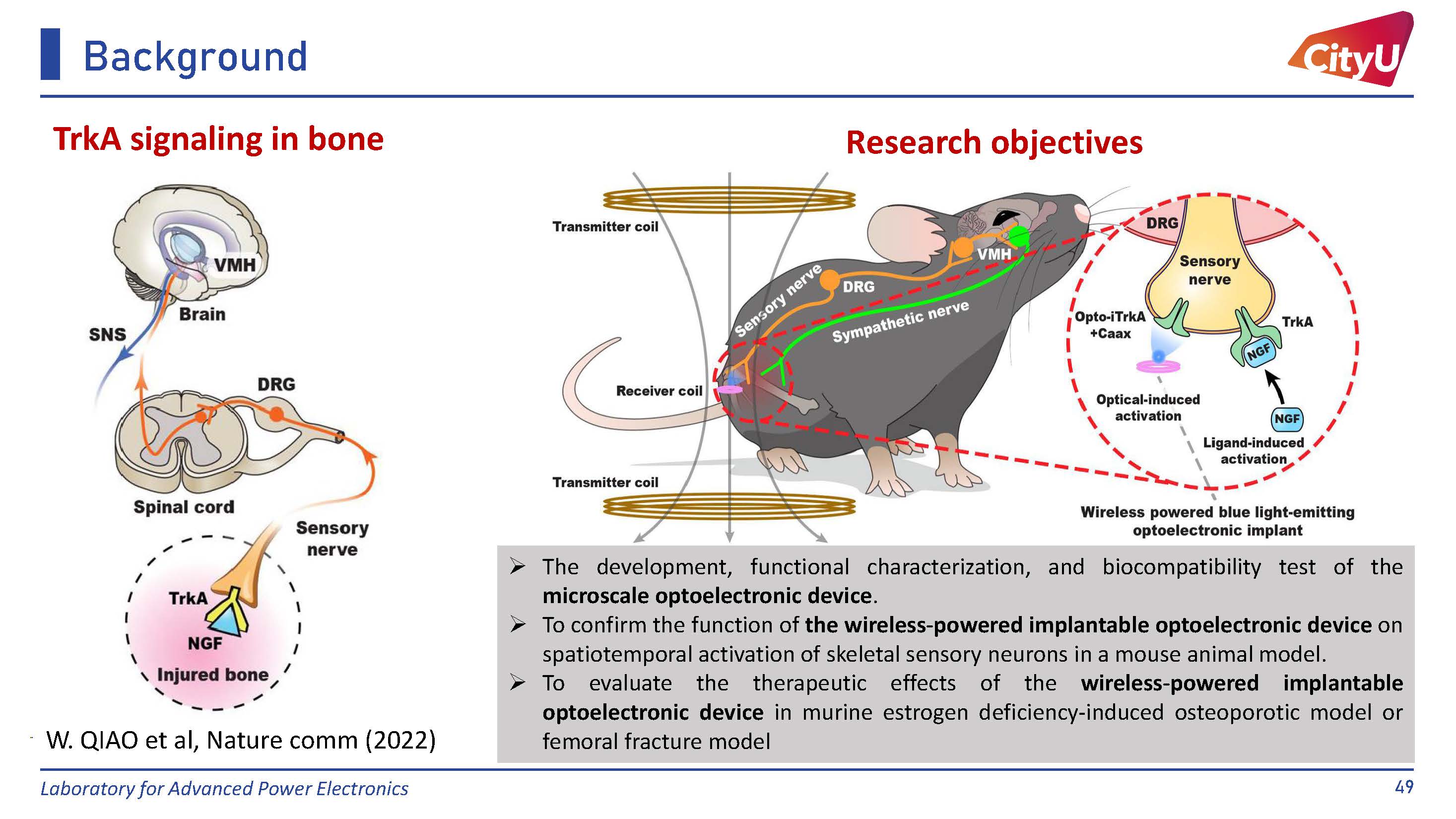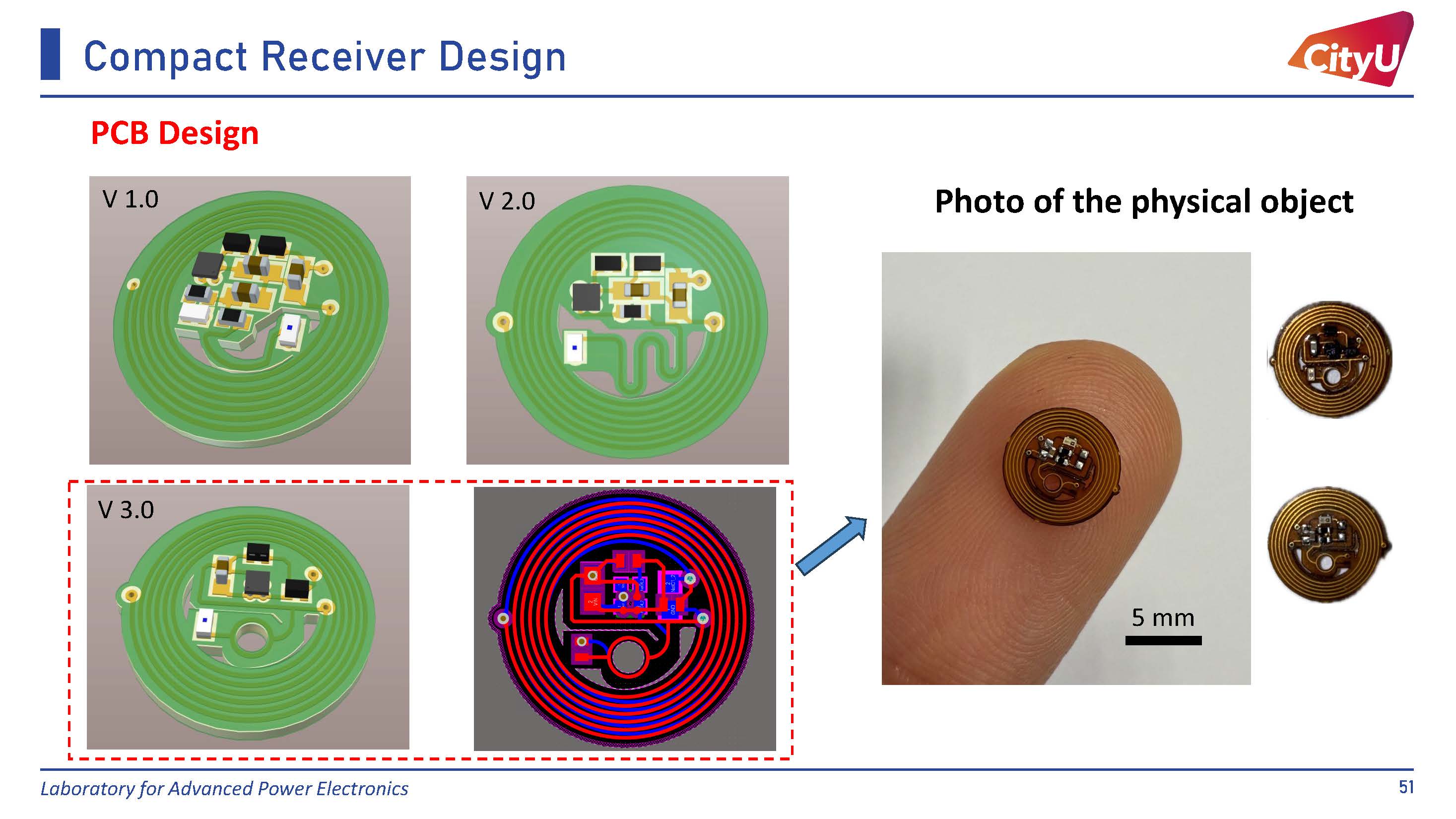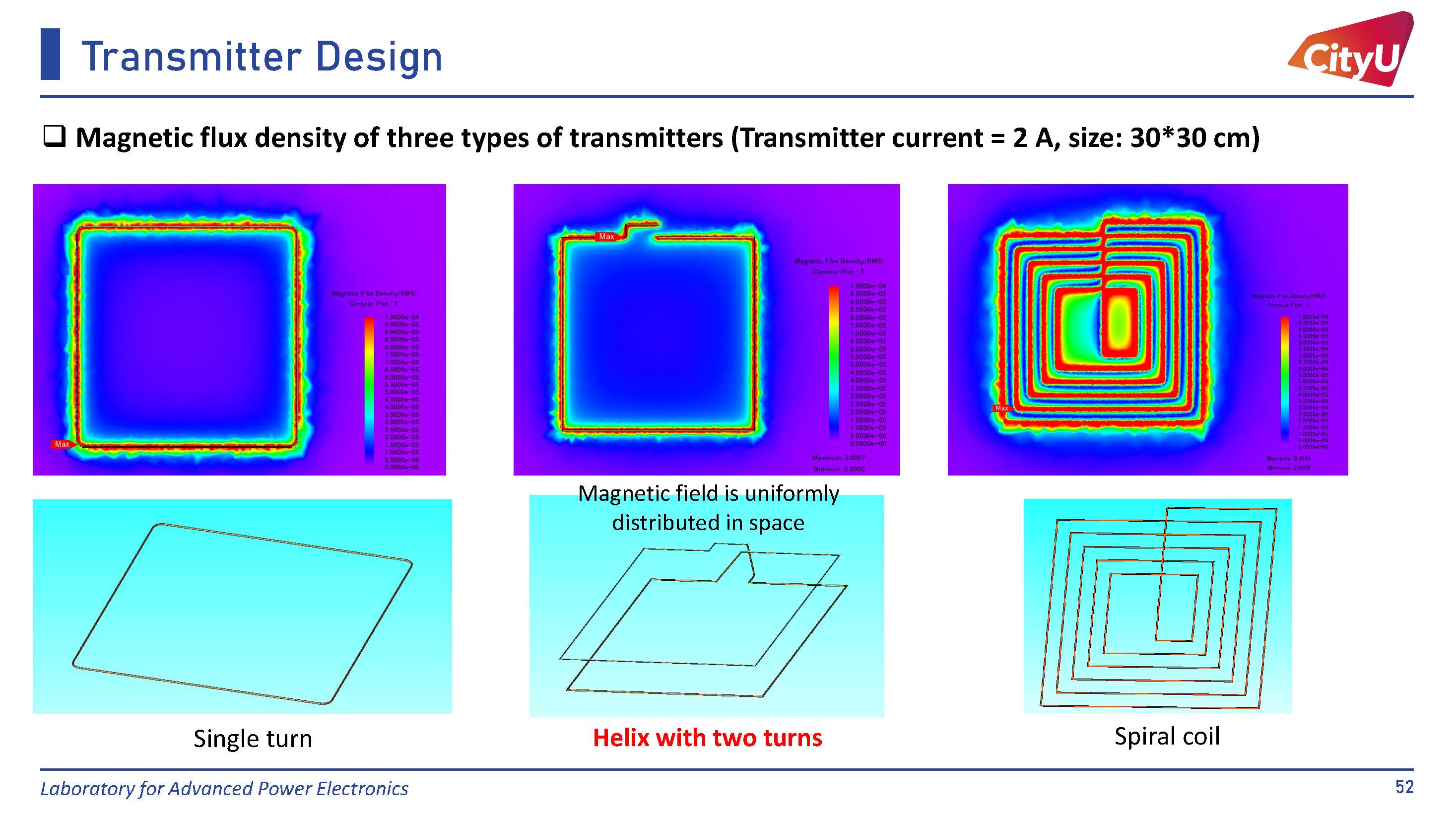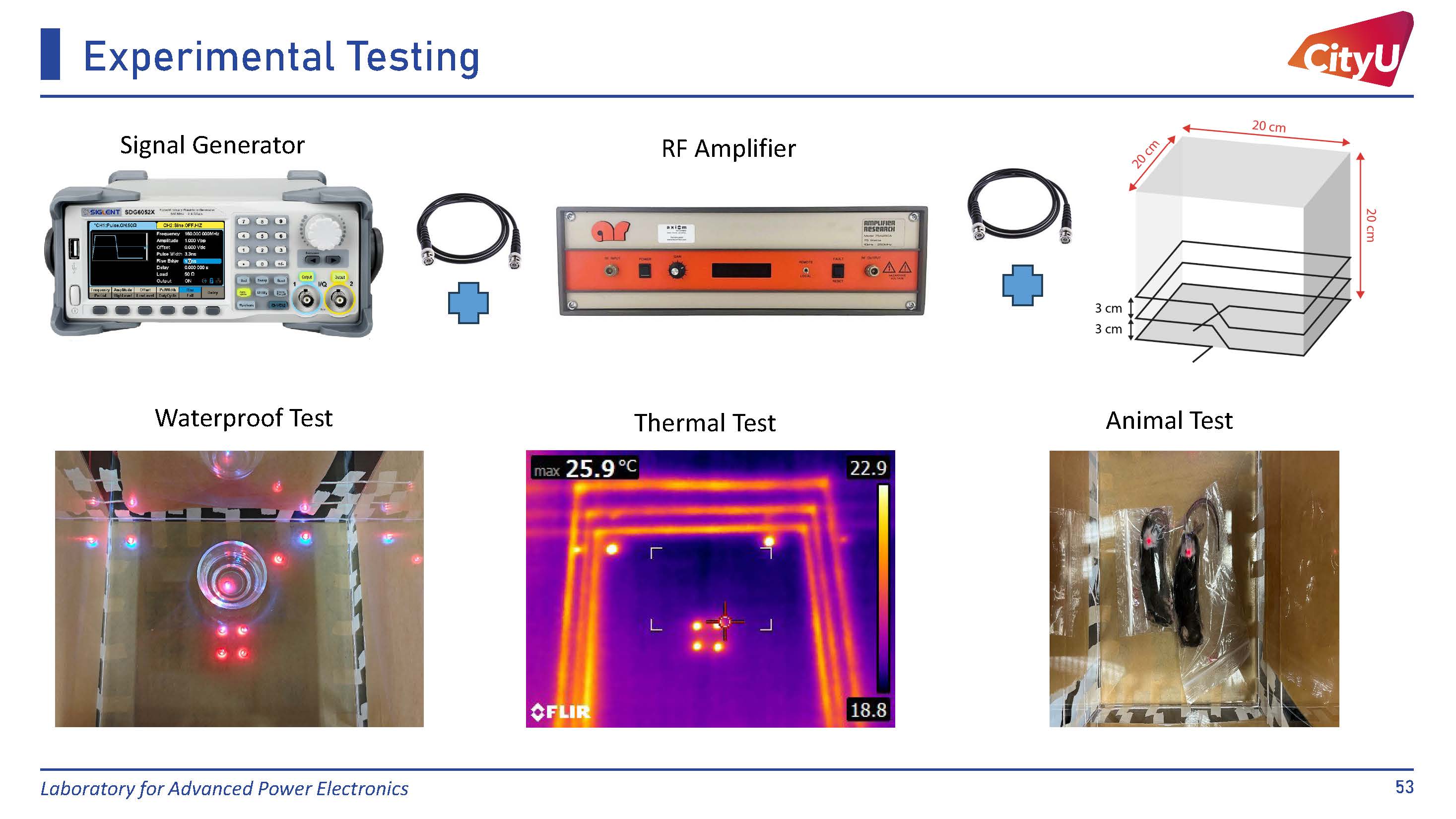Research
Research Overview
My research focuses on advancing the fundamental theory and practical implementation of Wireless Power Transfer (WPT) systems. This includes system modeling, control strategies, coupler design, efficiency optimization, and biomedical applications. The overview below presents a comprehensive visual summary of these key research directions and their interconnections.
© Tianlu Ma. All rights reserved. Please do not reproduce without permission.
1. Unified Full-load Discrete-time Model
The unified full-load discrete-time (UFDT) model is capable of precisely describing the characteristics of WPT systems under both light and heavy load conditions. It seamlessly incorporates the dual-mode behavior of the secondary-side rectifier operating in continuous conduction mode (CCM) and discontinuous conduction mode (DCM), providing a comprehensive analytical framework for full-range power transfer dynamics.
© Tianlu Ma. All rights reserved. Please do not reproduce without permission.
2. Periodic Energy Control
The Periodic Energy Control (PEC) strategy controls the output of the WPT system by regulating the energy injected into the resonant network during each switching cycle. It features fast dynamic response and strong immunity to mutual inductance variation. Moreover, PEC enables full-load Zero Voltage Switching (ZVS), making it a promising solution for efficient and robust WPT operation. However, special attention must be given to the system startup process, which requires separate design to ensure stability and reliability.
© Tianlu Ma. All rights reserved. Please do not reproduce without permission.
3. Model Predictive Control for Dynamic Wireless Power Transfer
This research proposes a model predictive control (MPC) strategy for dynamic wireless power transfer (DWPT) systems, which enables accurate and responsive power regulation under continuously changing coupling conditions. The controller predicts future system behaviors and optimizes the control actions in real time, ensuring high efficiency, stable power delivery, and robustness to misalignment and movement. It also supports multi-segment coordination and plug-and-play operations.
© Tianlu Ma. All rights reserved. Please do not reproduce without permission.
4. MHz Wireless Power Transfer for Biomedical Applications
This research focuses on MHz-level wireless power transfer (WPT) systems tailored for implantable biomedical devices. By leveraging compact coils, high-frequency operation, and tissue-safe power regulation strategies, these systems support wireless lighting, stimulation, and sensing in untethered microscale platforms such as micro-LEDs. The solution emphasizes miniaturization, efficient coupling through biological tissue, and biocompatible packaging.
© Tianlu Ma. All rights reserved. Please do not reproduce without permission.
Outlook and Future Work
Our future research will focus on enhancing wireless power transfer technologies in the following key directions:
- Dynamic Wireless Power Transfer
- MHz WPT in Biomedical Application
- AI Technology in WPT

